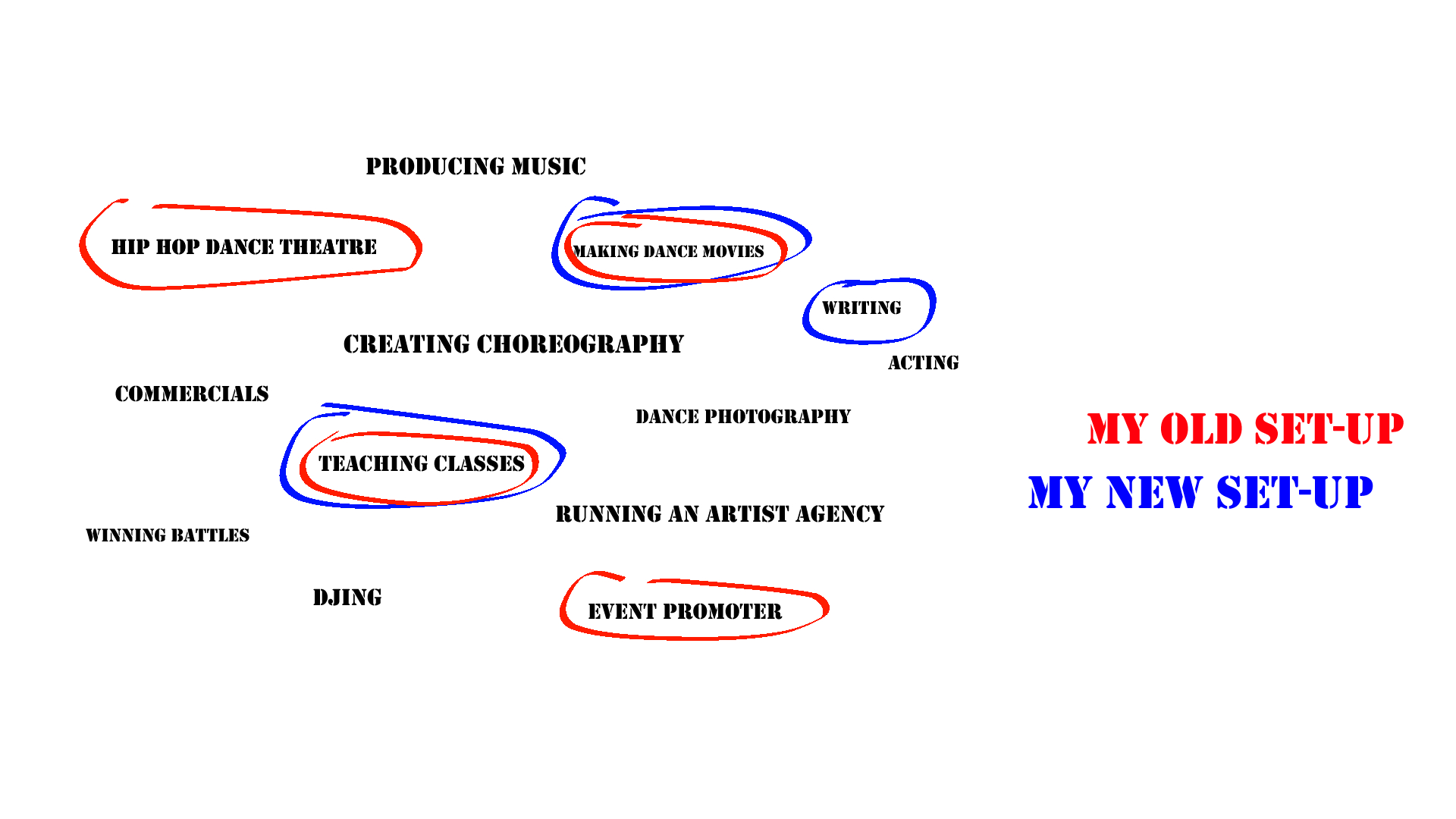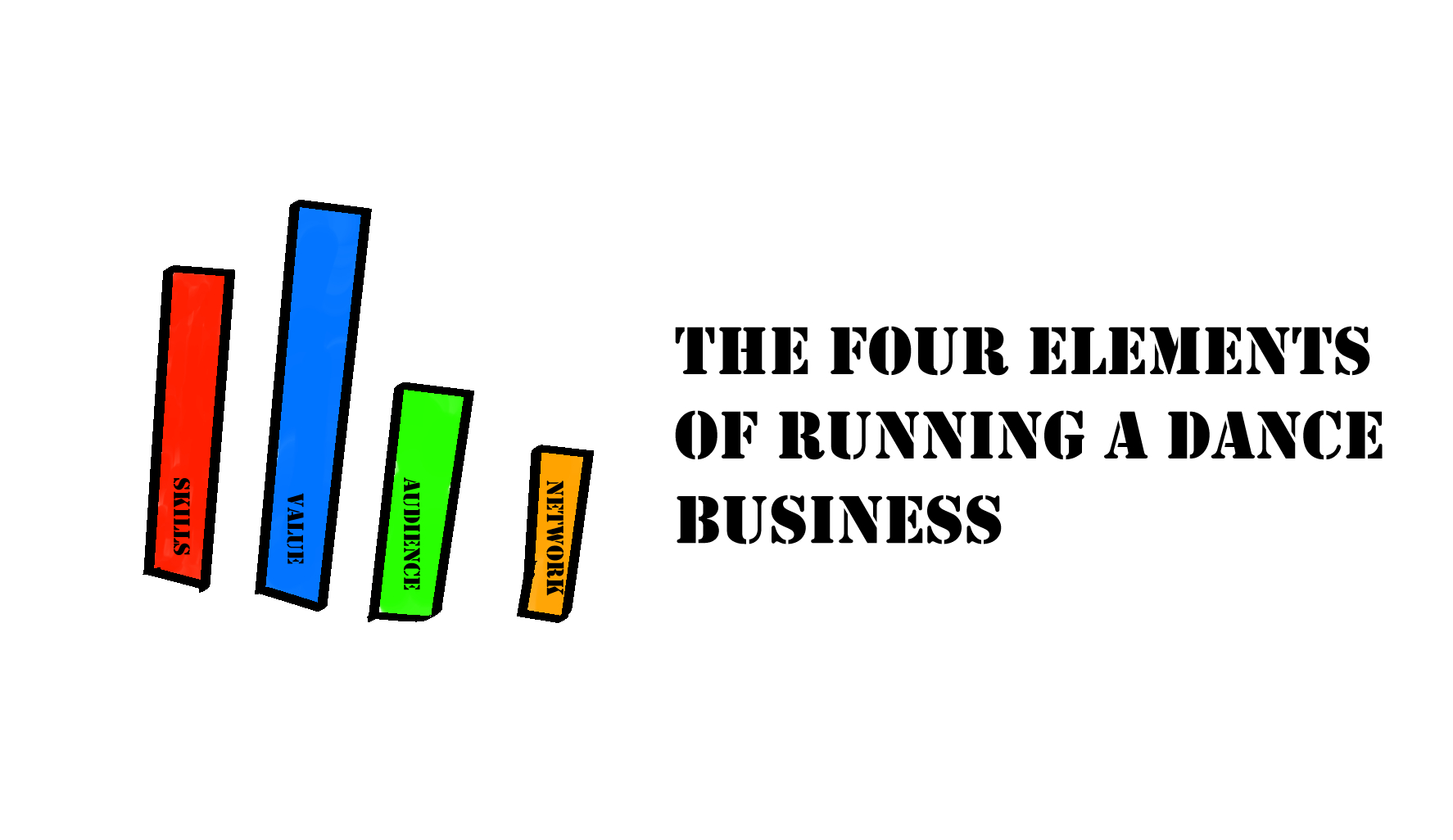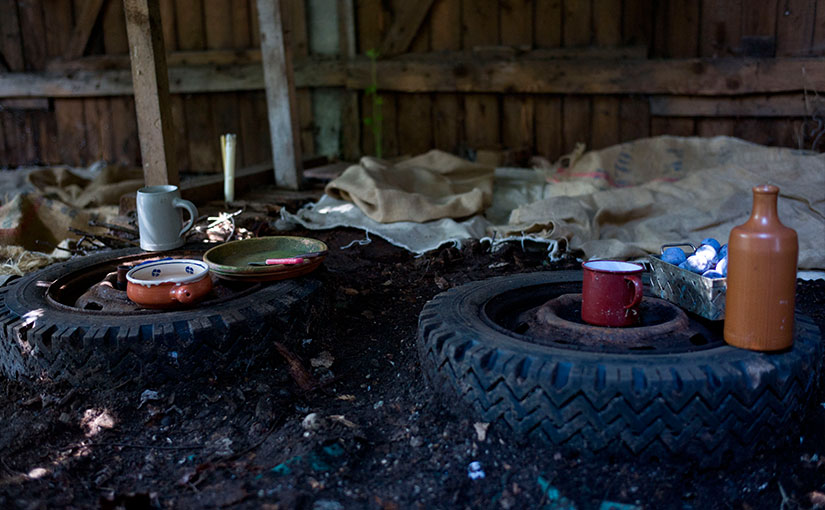We already talked about the abstract work that needs to go into the creation of your sustainable dance business and rolled up the most common options you can put work into.
Today I want to explore how to set up your activities for a balanced way of working. I hope you made a list of the things you consider possible for yourself, as suggested in my last post. It will make the following step much more accessible. If you did not, consider going back to this post and take a few minutes to compile your list.
What you are looking for is a combination of activities that a) provide a steady flow of income, b) you love to do, c) that synergise well and d) can support you even when you are not able to dance for a while.
The most common combination within the people that I know is the Performing, Teaching combo with an added secondary work field that has benefits for the other two.
Examples are Performing, Teaching and Event Management or Performing, Teaching and DJing/Music Production. I ran with Performing, Teaching and theatre and movie production for many years before the birth of my daughter.
This combination is prevalent because performing is one thing that most dancers love, and teaching is the most reliable source of income. When you pair them with event-management, you are doing community building, which pushes your reputation and makes more people come to your performances and classes. When paired with DJing/music production you can book a gig at dance events or sell your music to dancers. We are searching for these synergies.
Look at your list of things you can do. Define one primary activity that sounds like reliable, steady income (making the obvious choice of teaching here is not a bad thing). Now pick the one that you really want to do.
If you think that this combo can provide enough money for you, you are already good to go, when you have big balls. I recommend incorporating a secondary work field that plays into your primary ones or simply helps you build your name. You can also work with two secondaries, but you should have a reason to do so.
I will use my current situation as an example:
After the birth of our daughter, I stopped travelling for dancing because I wanted to be around. This immediately stopped my income stream from performing. I also was not able to teach on a regular schedule anymore. (We had a hard start due to medical conditions). What I did was starting to write, as I had the opportunity to do so for Rookies at Work, the agency I was with from the beginning. Here I had my secondary work field covering all the expenses from my family and me. As I write exclusively about dance topics, this work is definitely based on my dance knowledge. Now, as the child starts to go into daycare and my wife and I get used to our new parent-lifestyle, I develop some in-depth workshops so I can start to teach again. I also plan to publish some literature about dance topics. Finally, when the time comes, I will start a new movie project. In that case, I would have one primary field and two secondaries. The reason for that is that I value the time with my family more than being away for rehearsals and performances all the time.
Another point to keep in mind is that your decision is not final. You can always adapt along the road and change your activities, when new circumstances demand a different treat. But as long as you go with a set-up, you should be commited to make it work.
TL;DR: Pick a combination of 2 to 4 activity from your list from my last post and choose which combination works well by considering the following criteria:
- what provides a steady income (you need one)
- what do you love to do (to keep you hungry)
- what can you do to add people to your active activities or build your reputation
Be courageous and share your setup in the comments.







